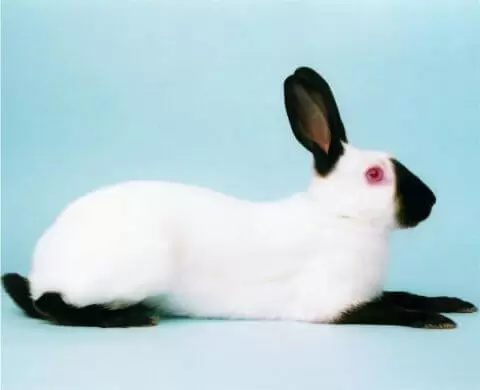- COUNTRY OF ORIGIN: Unknown
- YEAR RECOGNIZED: 1914
- USES: Fur, show, pet
- WEIGHT: 4.5 pounds (2 kg) max., senior bucks and does
- BODY TYPE: Cylindrical
- FUR TYPE: ARBA Commercial Normal Fur Standard; short, fine, silky
- COLORS: White with black, blue, chocolate, or lilac points (nose, ears, legs, feet, and tail)
THE ALL-WHITE, DARK-POINTED HIMALAYAN is the most cylindrical of North American rabbit breeds — long, light, and slender. One of the oldest rabbit breeds, its generally laid-back nature makes it an ideal breed for novices to raise. The little 4.5-pound (2 kg) Himmie wears a coat similar to the Himalayan cat, snow white with colored points (nose, ears, tail, legs, and feet). The kits are born pure white; the dark points develop over time.
The origins of the Himalayan have confounded researchers and rabbit enthusiasts for generations. The word “Himalayan” suggests origins in the high Asian mountains of the same name. There is no evidence to make that case convincingly, but the late Bob D. Whitman, who knew as much about rabbit breed histories as anyone, suggested that they perhaps were “natives of northern India and China, and perhaps some of the contiguous states.” Whatever its origins, this is one of the most widespread rabbit breeds on the planet.
The breed was imported to the United States from England in 1912. It became a popular exhibition and fur rabbit, although its fur became less valuable over time as newer breeds, such as the Mini Rex and Satin, came into vogue and replaced the traditional fur rabbits.

